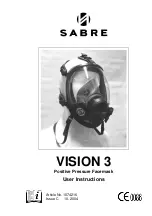
- 7 -
Figure 2.
Input Power Selection Jumper Location
effective in maintaining uniform fluid temperature. The ideal installation will provide the
sensor with well established smooth flow, uniform system temperature and consistent fluid
media.
2.2 ELECTRONICS
The standard enclosure for the integral electronics is an explosion-proof cast junction box.
.
CAUTION:
The electronics are not protected against condensing
liquid water inside the enclosure. If conduit is used, be sure conduit is dry
or sealed at the instrument to prevent conduit condensation from entering
the electronics enclosure.
Unless otherwise specified, normal ambient environment for the electronics is 40-120°F. Recommended
maximum temperature is 135°F.
2.3 ELECTRICAL CONNECTIONS
1.
Power — The input power requirement is listed on the tag on the electronics enclosure; make
sure the input power source is compatible. Available input power configurations are 24 Vdc,
24 Vac, 115 Vac, or 230 Vac. The Vac power is ½A, 50-60 Hz, single phase. The power
configuration is pre-set at the factory, but may be changed in the field (except for 115 to 230
Vac conversions). To select either 24 Vac or high voltage (115 or 230 Vac), ensure that power
has been disconnected. Then, remove the electronics module by removing the modular sensor
interface connector and then by pulling the handle on the top printed wiring board (PWB).
Using
Figure 2
, locate the power select jumper on the lower PWB and simply move the power
select jumper to either the “
Lo
” (24 Vdc or 24 Vac) or “
Hi
” (115 Vac or 230 Vac) position.
Do not apply power until the power select jumper position is visually verified.
Wire size no smaller than 24 gauge can be used for power. Fourteen (14) gauge stranded wire
is recommended for the relay contacts. The input power, analog output (for models with that
option), and relay connections are made as shown by Drawing 94080-5 in the back of this
manual. Note the electronics
module is removable for easy
termination of the wires.
DO
NOT
attempt to install
wiring with the electronics
module in place within the
enclosure. Bend and cut the
wires for a low profile fit,
being careful not to stress
them. Ground the enclosure
with a separate wire. Once
all connections are made,
firmly push the module back
into its base noting the
position of the keying post.
The electronics signal ground
is isolated fr om the






































